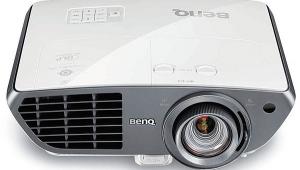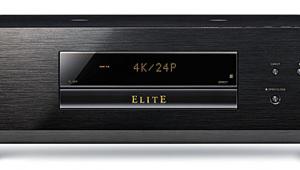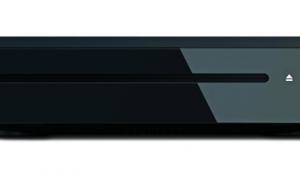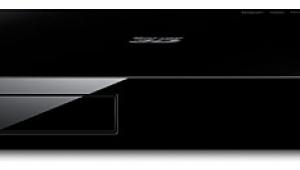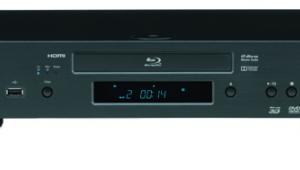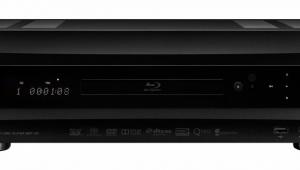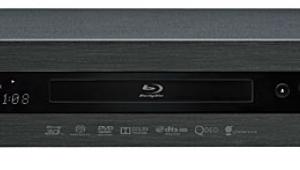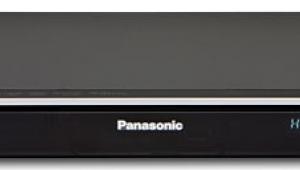Cambridge Audio Azur 752BD 3D Blu-ray Player Page 2

Sweet Sounds
Having just reviewed the Oppo BDP-105, making the transition to the Azur was a snap. I replicated all of the settings from the Oppo in the Azur setup menus and off I went. Connections were made using Audioquest cables for all outputs and inputs. I connected the Azur directly to my reference Anthem Statement D2V-3D surround processor via HDMI for Blu-ray playback. All video processing was defeated in the Anthem, providing a pure video path to my reference JVC X75 1080p 3D projector. For analog audio, I connected the Azur 752BD to my reference Parasound Halo JC2 analog preamplifier. This preamp, along with my Anthem D2V, fed a pair of Parasound Halo JC1 monoblocks and Paradigm Signature S8 loudspeakers. I also had the Oppo BDP-105 connected to the JC2 for level matched comparisons between the two. I had the Oppo connected via both RCA and XLR.
I had a great time with the Azur in my system. Not surprisingly given its platform, the Cambridge performed flawlessly in our video test bench and sets the bar for Blu-ray playback.
Highlights included a nice array of hot Blu-ray titles, including Skyfall, Wreck-It Ralph, and last year’s Best Picture winner, Argo. If you haven’t had to chance to watch any of these, I recommend them all, but none as much as Bond’s latest adventure, Skyfall. This was definitely the highlight of the movie-watching experience for me. Roger Deakins’ photography showed just how spectacular the 752BD’s video section could be, and the soundtrack was one of the best I heard last year. I don’t know if I’m ready to call Skyfall my favorite Bond film of all time, but it’s easily in my top 5.
Argo was another great film to serve up on the Azur. The mix of film stocks made for an interesting visual experience that wasn’t as cut and dry (or gorgeous) as Skyfall. Still, the Azur held its own with no artificial ringing or any other artifacts. For 3D testing, I threw in Disney’s latest animated feature, Wreck-It Ralph, which is a great piece of nostalgia for any gamer, but it also delivers a lot of heart. 3D rendering was perfect with the Azur, and I didn’t notice any crosstalk during playback. Since the Azur supports two HDMI outputs, you could easily connect the player straight to your display with one of the HDMI outputs if your receiver or processor lacks HDMI 1.4a switching and have the other HDMI output feed the soundtrack to your audio processor.
What I was most curious about was the audio, and whether the Cambridge approach would make a noticeable difference or improvement over my reference Oppo BDP-105, which, at $100 less, is within spitting distance of the Azur 752BD. The Azur takes a vastly different approach to audio processing. Cambridge Audio has employed an Analog Devices DSP to up-sample all digital audio to 192 kHz/24-bit to reduce jitter and improve the sound. From there it goes to its Wolfson DACs, of which there are five, for digital to analog conversion. By comparison, the Oppo uses the Sabre32 Reference DAC. Cambridge Audio also employs some proprietary filters to allow users to try some different options for their anti-aliasing filters, which are a necessary (and often audible) component for digital-to-analog conversion.
 I spent about a week listening to the Azur 752BD before I went into comparisons with anything else. I wanted to see how much I would enjoy it for day-to-day listening, and I must say, this is one sweet-sounding piece. I was immediately impressed with the textural details and how good the Azur brought out even the slightest nuance in everything I threw at it. Highs were delectable and vocals were rich without sounding overbright or cold. The soundstage was also a highlight. The Azur threw a very wide soundstage that extended well past my speakers and gave an amazing sense of dimension to good recordings.
I spent about a week listening to the Azur 752BD before I went into comparisons with anything else. I wanted to see how much I would enjoy it for day-to-day listening, and I must say, this is one sweet-sounding piece. I was immediately impressed with the textural details and how good the Azur brought out even the slightest nuance in everything I threw at it. Highs were delectable and vocals were rich without sounding overbright or cold. The soundstage was also a highlight. The Azur threw a very wide soundstage that extended well past my speakers and gave an amazing sense of dimension to good recordings.
I was particularly impressed by the way it handled my 96/24 Blu-ray Audio version of the Oscar-winning soundtrack of The Social Network by Trent Reznor and Atticus Ross. This instrumental piece has some absolutely amazing sonics and a soundstage that is second to none. My speakers absolutely disappeared throughout, and I was amazed at how convincing the Azur made the two-channel mix sound like a multichannel piece. This also came up again with the SACD of Alison Krauss + Union Station’s New Favorite. I love the back and forth nature of this record as it bounces between Krauss’s more radio-friendly tunes and the band’s more classic-timey instrumentals. This is a showcase piece for vocals and detail and the Azur never disappointed.
During the week I did some rather exhaustive listening tests of the Azur’s custom filters. I know these have been a trademark of Cambridge Audio’s players for quite some time now, but honestly, I couldn’t hear any sonic differences in my system. I tried just about every type of music I could think of with varying degrees of quality just in case that would bring to light any noticeable differences. I tried music selections with high noise floors, low noise floors, intense bass, lots of details, lots of spatial separation, lots of dynamic range, and just about anything else I could think of—but I couldn’t hear anything that stuck out as different among the various filters. Still, every mode sounded great with no obvious signs of degradation at all.
After about a week, I decided to move on to some comparisons with the Oppo. Both of these players use outstanding DACs, but the Oppo’s 32-bit DAC theoretically offers a bit more dynamic range. While I didn’t think this would translate into much audible difference given the caliber of the two DACs, I was curious if the bit depth would have any influence at all. Going through my Halo JC2 preamp, both sounded amazing. I made sure both were level matched, and I compared both using standard RCA analog interconnects from Audioquest. Differences were subtle at best, and most of the time I would wager I wouldn’t be able to tell you which was playing in a blind test. I thought spatial cues were slightly better with the Oppo, but the Cambridge had a very detailed sound that at times seemed to bring out a tad more inner detail in the music. Moving over to the Oppo’s balanced outputs seemed to help the Oppo resolve the bottom end a bit better, but the difference was very slight.
The comparison took a different turn when I connected both players directly to the amps, bypassing any external preamp and using their own internal volume controls. Here I thought the Oppo sounded a touch more detailed on both the upper and lower end. The Cambridge still sounded fantastic, though, with the same exquisite soundstage and detail. The Oppo just delivered a bit more of the air in the soundstage, providing a little more of a sense of being in the recording studio. Bass definition was also a bit tighter with the Oppo. This was pretty noticeable with the standup bass plucking on my 96/24 DVD-A of Diana Krall’s “All or Nothing At All.” I don’t want to overstate it, though—the differences were still very slight, and I would not have felt the Cambridge fell short in the slightest if listening to it on its own. I came out of all this feeling that these two were pretty evenly matched overall sonically, with only a slight edge given to the Oppo for my ears and taste. But I should emphasize that I definitely would not be disappointed replacing the Oppo with the Azur 752BD in my system as my reference piece; it delivers a sensational audio experience.
Conclusion
The Cambridge Audio Azur 752BD has definitely found a place in my recommended source component list. From the exceptional build quality to its flawless Blu-ray performance, it really doesn’t leave much on the table. The list of great universal Blu-ray players is pretty small, but if you’re in the market for one, this is definitely one to look at.
